Marketing KPIs are quantifiable measurements of how effective your marketing efforts are. From your website and search engine optimization (SEO) to your email campaigns, social media, and more, tracking marketing performance enables you to:
- Measure progress against expectations.
- Identify underperforming marketing so it can be improved.
- Optimize your budget and maximize return on investment (ROI).
- Inform strategic decision making with data-driven insight.
This year, what you’re looking for from metrics tracking is a well-rounded view of your marketing activity. 11outof11 has put together a helpful tipsheet to help you learn which marketing KPIs you should be tracking. Download our guide, Which Marketing Metrics Should Be on Your Scorecard? for the best insights!
Here’s a rundown of top marketing KPIs that help you identify where your strategy isn’t working as planned and what to quickly adjust to keep your business growing.
7 Marketing Metrics To Look At for a Successful Website
- Average Time On Page
By tracking how long a visitor stays on a webpage, you can quickly see which pages don’t match a visitor’s exact search intent. Average time on page can help you to determine how engaging your content is. If you’re getting enough visitors but they’re only spending a short time on a page, you will want to adjust your targeting strategies, your page content, or both.
- Bounce Rate
This percentage metric tells you how useful visitors find your website and how well your content is answering their questions. If your visitors are leaving your site quickly, your content may be to blame. Expect to see a high bounce rate if visitors seem put off by spammy-feeling call-to-actions or a poorly designed website. If your bounce rate is increasing over time, it will harm your SEO and organic traffic rank. Fix pages with the highest bounce rate first.
- Average Session Time
If you want to understand how effectively your website is meeting your visitors’ reasons for coming to your page, this metric is valuable. A higher average session time usually indicates visitors are engaging with your content.
If the average session duration is higher than 60 seconds and people aren’t converting, your call-to-action may not be doing its job. If people are using your site for less than 30 seconds and bouncing off, look at the function of your user interface.
- Returning Visitors
The more visitors returning to your site, the bigger the group of engaged people and quality visitors you have to build a relationship with and help convert. When they’re searching for information, people tend to browse a few sources online before deciding to contact one of them. Increasing your returning visitors through important keywords will help you win their business.
- Click-Through Rate (CTR)
Calls-to-actions (CTAs) direct your visitors to the next thing you want them to do, like download an eBook, complete a form, add to cart, or something else. If visitors aren’t clicking on your CTAs, it’s time to test new ones.
If you’re seeing low click-through rates but your website is getting a lot of impressions in search, you may need to revise the title tag and meta description so more people will click.
- Conversion Rate
Making conversions on your site will help your business gain customers and make revenue. A conversion path metric tracks the steps people take to convert on your site. A conversion path consists of a content offer, call-to-action, landing page, and thank you page. A visitor converts into a lead by seeing the offer they’re interested in and clicking on the CTA button, which navigates them to a landing page. Here, they provide their information on a form in exchange for access to the offer. Then they travel to a thank you page where they receive the offer.
The new leads and leads per visitor metric track the percentage of leads generated by the number of visitors to your site. You can learn whether your marketing strategy is driving potential visitors with the intent to buy.
- Exit Rate and Top Exit Pages
Knowing the number of exits and the pages people are exiting most could help you determine why visitors are not staying longer:
- A page can be slow to load.
- A call-to-action could be missing.
- The content isn’t clear enough for a visitor to take the next step.
Once you determine where visitors leave your website the most, you can optimize for better website engagement.
3 Marketing Metrics To Look At for Improving SEO
- Keyword Ranking
When someone makes a query on a search engine, your relevant web page will show up in the search results. Its keyword ranking is the position it has on the search results page, where it ranks for relevance based on that query. Improving your keyword rankings can translate into more traffic on your website.
- Backlinks
Links on other websites that point to your website are considered endorsements by search engines. The more backlinks you acquire, the more authoritative your site becomes. Backlinks from reputable domains are one of Google’s most important factors for keyword ranking, which can translate into more organic traffic.
- Organic Sessions
Organic sessions tell you how long it takes for each visitor to get on your website, open a few pages, and leave. If you want to know how much organic traffic your website attracts related to your marketing efforts, track the time a person engages with your website (or an app) after they click on organic search results.
3 Marketing Metrics To Look At for Better Email Campaigns
- Subscribers
Subscribers opt in to receive your emails. The number of subscribers you have represents:
- The size of your audience
- How many different relationships you can build
- The number of prospects you could convert
Growing your subscriber list means delivering value with each email so subscribers stay engaged with your business.
- Open Rate
Compared to the total number of emails you send out, who’s opening them? Knowing the open rate helps you know whether your emails are relevant to your audience and engaging. If you’re seeing trouble, work on subject lines, sender names, and audience segmentation.
- Click-Through Rate
Find out how many people are engaging with your marketing messages and want to learn more about your offer or your business by tracking click-through rate, which is the ratio of those who click on a specific link in your email to the number of total recipients who opened the email.
2 Marketing Metrics To Look At for Social Media Engagement
- Follower Count
How many people follow your social media pages across different platforms? Tracking follower count reflects the popularity of your business and shows you how many followers people can potentially see your content and engage with you. A growing follower count could mean more revenue.
- Average Engagement Rate
Average engagement rate (AER) is the percentage of followers who liked, commented, shared, or saved your content compared to the total number of followers. When you track AER across platforms, you’ll better understand what content resonates the most and where. A healthy AER shows your content strategy is working.
ROMI – The Mother of All Marketing KPIs
If you want to know how much your marketing generates compared to the cost, track and monitor the return on marketing investment (ROMI). You’ll determine:
- The overall effectiveness of each marketing campaign.
- If you spend your marketing budget efficiently.
- Which marketing channels are the best-performing for your brand.
- How you can convince stakeholders to invest in more specific marketing initiatives.
- If your marketing contributes to your bottom line.

11outof11 Knows Content Marketing
If you want to understand what marketing KPIs work best for your business, connect with 11outof11. Request a complimentary call with an 11outof11 expert. Contact us to learn more.






.png)






